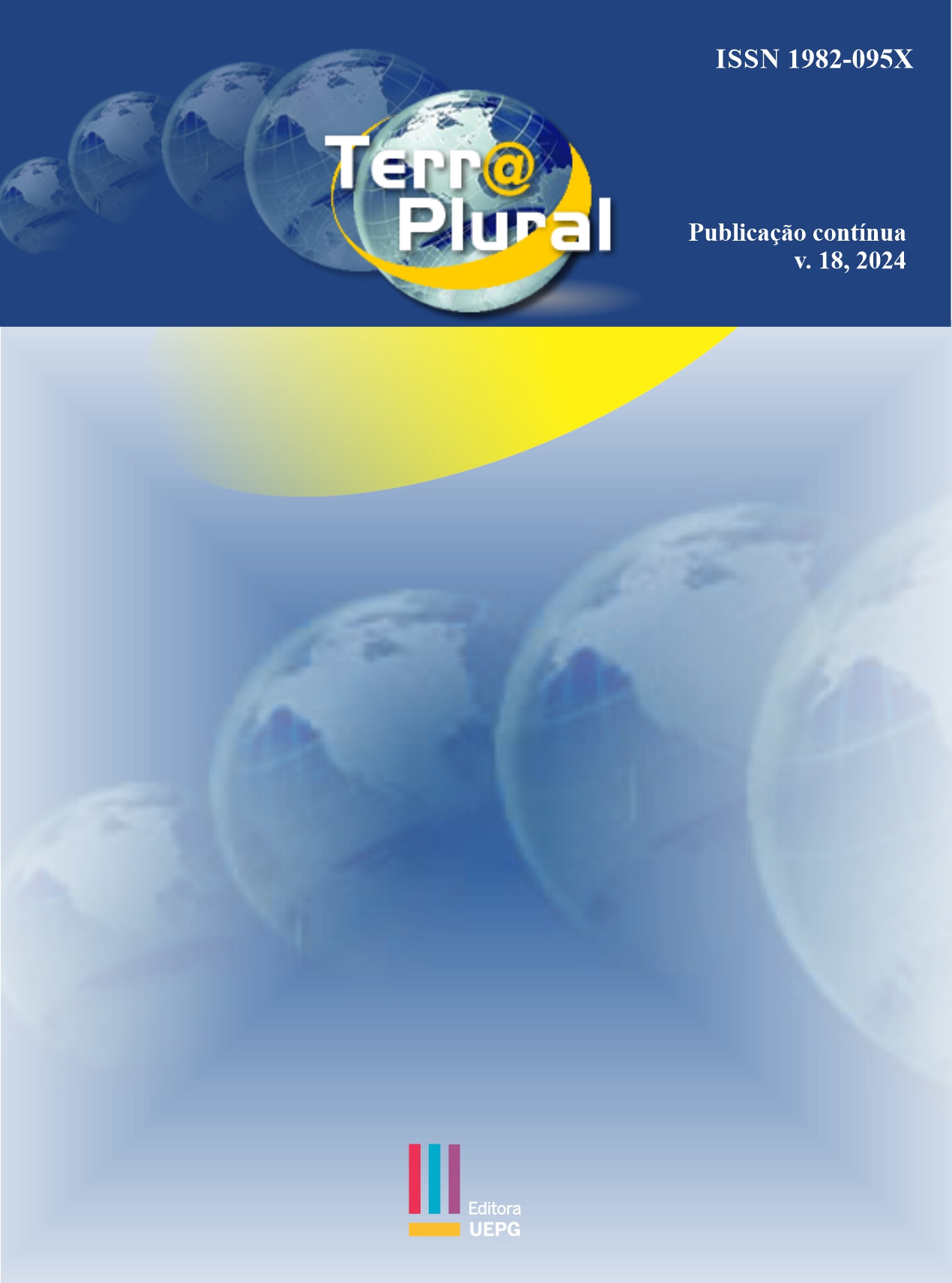Proposta para adensamento arbóreo da área central e bairro Ronda em Ponta Grossa, PR, Brasil
DOI:
https://doi.org/10.5212/TerraPlural.v.18.2422591.016Palavras-chave:
Árvores urbanas, Plano de arborização, Planejamento urbano.Resumo
A arborização de vias públicas fornece diferentes benefícios sociais, ambientais e econômicos. Tendo isto em mente, o Ministério Público do Estado do Paraná- MPPR, determinou que os municípios devem elaborar o Plano Municipal de Arborização Urbana. Este artigo tem o objetivo de apresentar vias potenciais para adensamento arbóreo na área central e bairro Ronda na cidade de Ponta Grossa. A partir de uma metodologia que considera o espaçamento adequado entre as árvores e os componentes urbanos, foi possível indicar vias que têm potencial para receber árvores, que já possuem uma quantidade ideal de árvores e as que contêm uma quantidade de árvores maior que o previsto. Desta forma, foi possível perceber que na área central, 23 vias podem receber adensamento arbóreo em 65 quadras, podendo receber até 305 árvores. Já no bairro Ronda, 25 vias podem receber adensamento arbóreo em 77 quadras, com potencial de até 390 árvores.
Downloads
Downloads
Publicado
Como Citar
Edição
Seção
Licença
Copyright (c) 2024 Denny Wilson Jobbins Haas, Silvia Méri Carvalho

Este trabalho está licenciado sob uma licença Creative Commons Attribution-NonCommercial-NoDerivatives 4.0 International License.
Os autores mantêm os direitos autorais e concedem à revista o direito de primeira publicação, que permite o compartilhamento do trabalho com reconhecimento da sua autoria e publicação inicial nesta revista. Os autores autorizam a distribuição para indexadores e repositórios institucionais, com reconhecimento da sua autoria e publicação inicial nesta revista. Autores são estimulados a distribuir a versão on line do artigo (por exemplo, em repositórios institucionais ou em sua página pessoal), considerando que isso pode gerar alterações produtivas, bem como aumentar o impacto e as citações do artigo publicado.

Este obra está licenciado com uma Licença Creative Commons Atribuição 4.0 Internacional.















